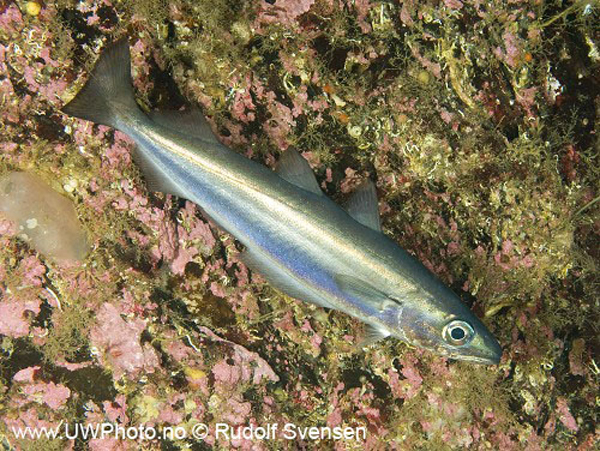
|
Micromesistius poutassou (Risso, 1827) Blue whiting |
||
| Melù, Potassolo, Lope, Lozza, Lupara, Melu, Merlu, Mirruzzu, Mirruzzu 'mperiali, Mirruzzu sapunaru, Molo, Molo da parangal, Nuzzu sbene, Occhialone, Ocialon, Pesc sben, Pesce molo, Pisci fica, Potassolo, Putassone, Putassú, Puttasseu, Sadda i Spagna, Stoccafisso, Stocco, Struzzu, Tenchia | ||

|
|
photo by
Svensen, R. |
| Family: | Gadidae (Cods and haddocks) | |||
| Max. size: | 55.5 cm TL (male/unsexed); max.weight: 830.0 g; max. reported age: 20 years | |||
| Environment: | bathypelagic; marine; depth range 150 - 3000 m, oceanodromous | |||
| Distribution: | Northeast Atlantic: Barents Sea south through the eastern Norwegian Sea, around Iceland, then in the western Mediterranean, and south along the African coast to Cape Bojador. Northwest Atlantic: southern Greenland and off southeast Canada and the northeastern coast of the USA. | |||
| Diagnosis: | Dorsal spines (total): 0-0; Dorsal soft rays (total): 24-28; Anal soft rays: 33-39. Dorsal fins widely spaced, interspace between second and third fins longer than base length of first dorsal fin. Lateral line continuous over whole body. Color is blue-gray dorsally, grading to white ventrally. Sometimes with a small black blotch at the base of the pectoral fin. | |||
| Biology: | Found over the continental slope and shelf to more than 1000 m, but more common at 300-400 m. Feeds mostly on small crustaceans but large individuals also prey on small fish and cephalopods. Makes daily vertical migrations: surface waters at night and near the bottom during the day. Sold fresh and frozen, and also processed as oil and fishmeal (Ref. 1371). | |||
| IUCN Red List Status: | Not Evaluated (N.E.) Ref. (130435) | |||
| Threat to humans: | harmless | |||
| Country info: | Collected from Gulf of Taranto, southern Italy (Ref. 87991). | |||